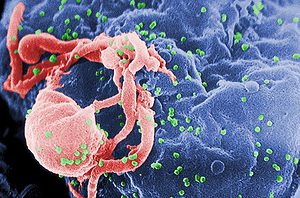The U.S. Food and Drug Administration recently gave its seal of approval for the introduction of Truvada on the pharmaceutical market, a drug which allegedly can prevent HIV infection with an effectiveness rate as high as 75 percent when used in combination with safe sex practices. The Aids Healthcare Foundation (AHF), which is largest Aids support organisation in the world, however called the decision reckless, citing previous studies which suggested possible kidney damage.

Truvada, a combination of two antiretroviral drugs used in HIV treatment – emtricitabine and tenofovi, was previously tested on two groups. The first was comprised of homosexual and bisexual couples of men from the US, in which one of the partners was infected with HIV and the other was clean of the virus. The results of the three year long study showed that the uninfected men taking the pill had a 42% protection rate. There are 1.2 million people who are HIV-positive in the US and infections are increasing. It’s estimated about 50,000 US adults and adolescents are diagnosed with HIV infection each year, despite numerous efforts from behalf of the government and NGOs to educate the populace on the risks of infection, offer prevention information and counsel those already inflicted by the disease.
The second trial was made in Africa, where the University of Washington’s international clinical research centre recruited more than 4,700 discordant heterosexual couples, since 2008, in what’s one of the largest HIV prevention trials in history. Results were better here, as individuals who had taken the drug were able to reduce the risk of infection by 75 percent. Participants from both US and Africa were counseled encouraged to use condoms to protect themselves whether they were given Truvada or not.
“The data clearly demonstrate that Truvada as pre-exposure prophylaxis is effective at reducing the risk of HIV infection acquired through sexual exposure,” Dr. Connie Celum, a professor of global health and medicine at the University of Washington who led the heterosexual couples trial, told Boston Globe’s Daily Dose. “It is exciting to consider the potential impact of this new HIV prevention tool, which could contribute to significantly reducing new HIV infections as part of a combination HIV prevention strategy.”
Despite the drug showing promising results, it’s rather ironic that an one year treatment is estimated at costing $13,900, considering most people diagnosed positive with HIV are linked with poverty and have no healthcare. Truvada is already used for Aids treatment, and Gilead Sciences, the manufacturer, discounts the drug in the developing world, bringing the price as low as $100 a year.
“Today’s approval marks an important milestone in our fight against HIV,” said FDA Commissioner Dr. Margaret Hamburg. “Every year, about 50,000 U.S. adults and adolescents are diagnosed with HIV infection, despite the availability of prevention methods and strategies to educate, test, and care for people living with the disease.”
The Aids Healthcare Foundation (AHF), the largest Aids support organisation, has rushed to label the FDA decision as reckless, pointing towards studies linking the drug with kidney damage. Also, the organization argues that Truvada should not be given without an HIV test to ensure the person taking the pills is not already infected – otherwise the virus could become resistant to the drug.
Michael Weinstein, AHF president, called the FDA decision “completely reckless and a move that will ultimately set back years of HIV prevention efforts”.
He added: “From the beginning, we believe there was a rush to judgment by government officials and others in favour of such approval despite decidedly mixed studies offered in support.
“The FDA’s move today is negligence bordering the equivalence of malpractice which will sadly result in new infections, drug resistance and serious side effects among many, many people.”
Safety risks for pregnant woman are still unknown. Other known side effects of Truvada include diarrhea, nausea, abdominal pain, headache, and weight loss.






